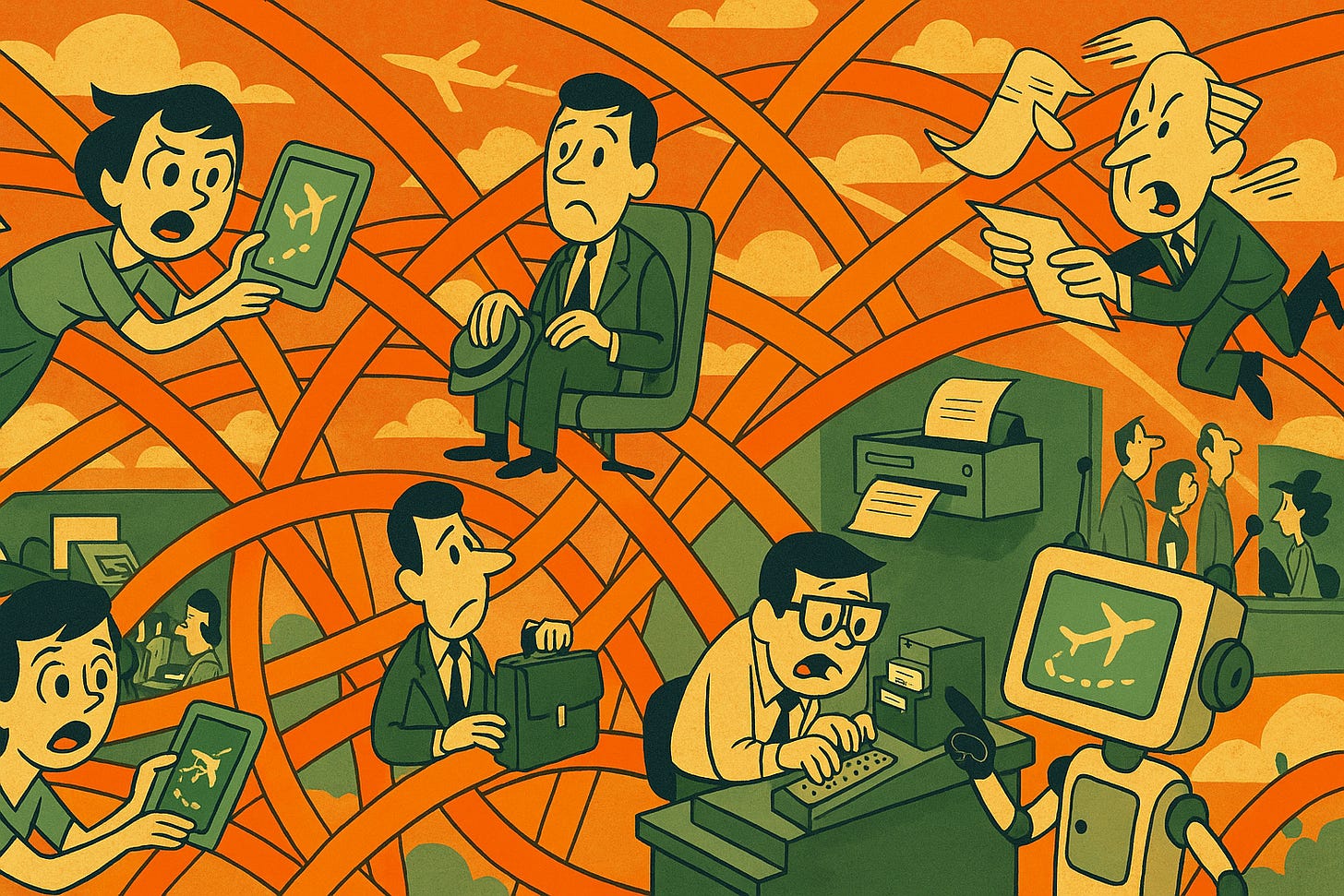When Perfect Journeys Hit Organizational Reality
An unexpected benefit of diving deep into academic research is finding studies that are both interesting, and instructive. Case-in-point, this research that I came across on the inefficiencies of air travel in China (stick with me here…)
Economists tracked airline efficiency in China and discovered something that should make every journey orchestration professional uncomfortable: Regulatory constraints forced routes that don’t just inconvenience travelers—they systematically destroy economic relationships.
Specifically, Chinese airlines deviate 17% from optimal routes (vs. 5% in developed markets), adding 164km to average trips. But the downstream impacts? Brutal. Every standard deviation of route inefficiency reduced cross-regional business investment by 12%; collaboration partnerships declined significantly; and—the kicker—some connections became so operationally complex that they simply weren’t offered anymore.
Sound like any customer journey maps you know?
We design these beautiful, empathetic customer experiences in workshops, then watch them get strangled by the organizational equivalent of “restricted airspace”—IT systems that require three departments to update a customer record, approval workflows that predate the internet, and KPI structures that pit customer-facing teams against each other.
The research methodology was based on real flight tracking data versus optimal paths; they measured actual routes, not intended ones. When did we last do that for our customer journeys?
How does this relate to CX? The study found that 67% of operational inefficiencies get passed directly to customers through higher costs and degraded service. In CX terms, that’s every unnecessary handoff, every “system limitation,” every time we ask customers to repeat information we already have.
That’s just one challenge. There’s so much value lost in ‘hidden connections as well.’ Using predictive modeling, the report estimated that if routing efficiency reached benchmark levels, 10% more city pairs would be connected. They’re not just frustrating existing customers— they are systematically excluding entire segments because our journey architecture makes serving them unprofitable.
The parallels are uncomfortable:
Beautiful journey maps that ignore operational constraints
Inefficiencies that compound exponentially across touchpoints
Customer segments we can’t serve due to process complexity
Costs passed to customers disguised as “system limitations”
The researchers used historical route data to predict which new connections would succeed—essentially using past constraints to model future possibilities. Meanwhile, we’re still mapping idealized futures without accounting for organizational physics.
Questions for CX Executives to ponder:
Are you measuring customer experience or customer intentions?
How much of your operational friction are you unconsciously passing to customers?
Which market segments remain “unconnectable” because you internal journey architecture is too expensive to serve them?
And the big one: When was the last time you tracked actual customer paths through your organization versus your PowerPoint version? Because I’m betting the deviation percentage would make Chinese airlines look efficient.
Time to stop designing perfect journeys and start optimizing real ones.
Research: Barriers in the Sky - Economic Impact of Network Inefficiency
#CustomerExperience #CXStrategy #JourneyOrchestration #OrganizationalDesign #CXTransformation


